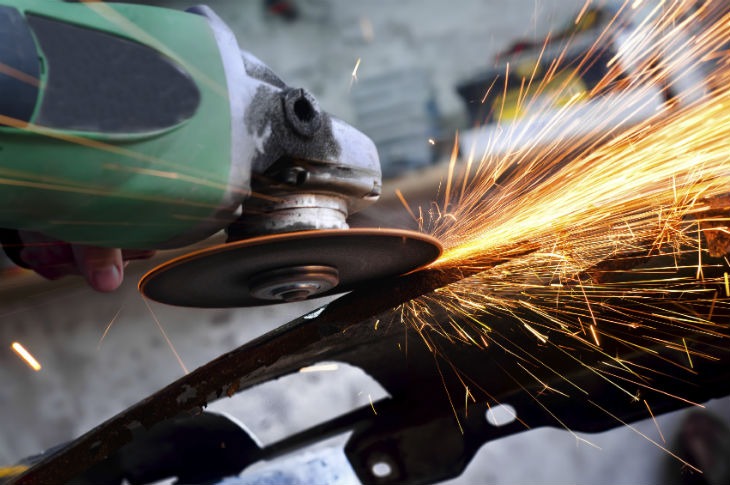Metal is one of the sturdiest materials in the world, which is why it’s used in everything from building construction to the fabrication of HVAC ventilation systems.
Though metal is engineered to last an incredibly long time, it is not impervious to damage. Water and air can cause oxidation, which in turn can gradually compromise the beauty and integrity of metal structures and surfaces until they fail.
The Complete Guide to Blasting, Priming, and Galvanizing
Blasting, priming, and galvanizing, however, are some of the best ways to repair and prevent damage to metal surfaces. Let’s examine the process to better understand what this process entails.
1. Evaluation and Preparation of Metal Surfaces and Equipment
The first step in restoring metal is evaluating how much damage it has incurred. Most metal surfaces exposed to the elements will experience minimal damage, leaving them structurally sound and ready to be refinished.
After the integrity of the metal has been evaluated, it can be prepared for the next step. This may require removing the metal, unbolting it, or simply cleaning it with a brush to remove certain contaminants.
2. Blasting the Metal Clean
The next step is to apply an abrasive to remove rust and any other mineral deposits that may have formed on the metal. This is imperative to ensure that the metal is just metal, ensuring the longevity of the proceeding steps.
This step also gives the primer something to adhere to. This makes the primer stick better, producing a more favorable result.
For a thorough guide on blasting, check out our blog: The 5 Best Ways to Blast Metals for a Clean Finish
3. Priming the Surface of Metal Products like Condensers
Primer acts as a protective coat when it is applied to metal. It can repair minor blemishes caused by damage that may have built up on a metal surface over time.
Primer acts to seal moisture out, which is especially important when HVAC equipment is involved. This gives the metal extra longevity while reducing the number of contaminants that “linger” on the metal.
4. Galvanizing Metal to Deter Further Damage
The last step in the process is galvanization. This is where a protective layer is applied to things like the insides of HVAC vents, condenser units, and other mechanical components where priming may not be appropriate.
Zinc is typically the main material of choice for galvanizing. This protects the metal from oxidation by allowing elements to bond to the zinc rather than the metal.
Learn More About Blasting, Priming, and Galvanizing at Tampa Steel & Supply
Blasting, priming, and galvanizing are three essential components to ensure that metals have a long life. These processes can prevent damage while minimizing the need for repairs. This simple process is a delicate one that requires the knowledge only Tampa Steel and Supply can provide. Trust us when you need to refinish your metal or when you want to protect it from harsh elements. Give us a call today to learn more.
Request a Quote Online
Or Call Tampa Steel & Supply at (813) 241-2801

